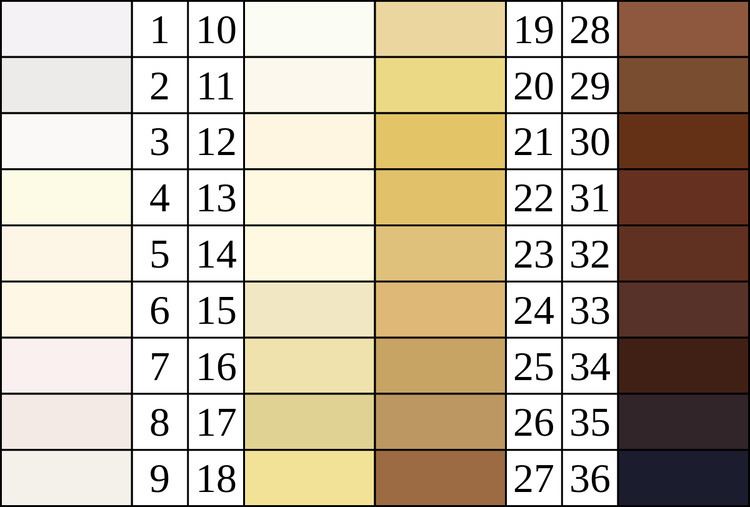 | ||
Von Luschan's chromatic scale is a method of classifying skin color. It is also called the von Luschan scale or von Luschan's scale. It is named after its inventor, Felix von Luschan. The equipment consists of 36 opaque glass tiles which were compared to the subject's skin, ideally in a place which would not be exposed to the sun (such as under the arm). The von Luschan scale was used to establish racial classifications of populations according to skin color; in this respect it is in contrast to the Fitzpatrick scale intended for the classification of the skin type of individuals introduced in 1975 by Harvard dermatologist Thomas B. Fitzpatrick to describe sun tanning behavior.
The von Luschan scale was used extensively throughout the first half of the 20th century in race studies and anthropometry. However, it was considered problematic, even by its practitioners, because it was very inconsistent. In many instances, different investigators would give different readings of the same person. The von Luschan scale was largely abandoned by the early 1950s, replaced instead by methods utilizing reflectance spectrophotometry.
The following table shows the 36 categories of the von Luschan scale in relation to the six categories of the Fitzpatrick scale:
